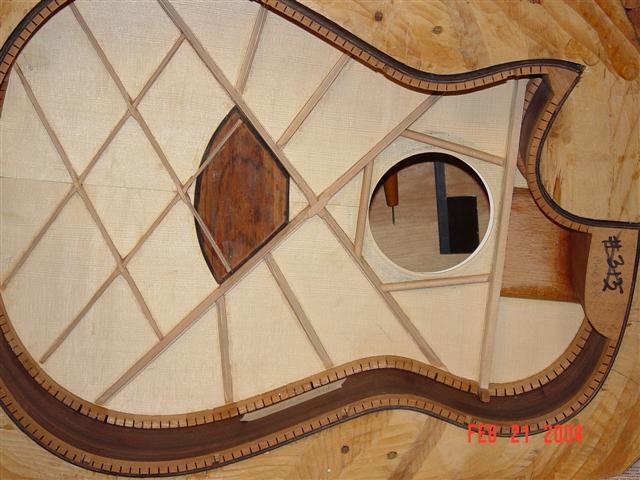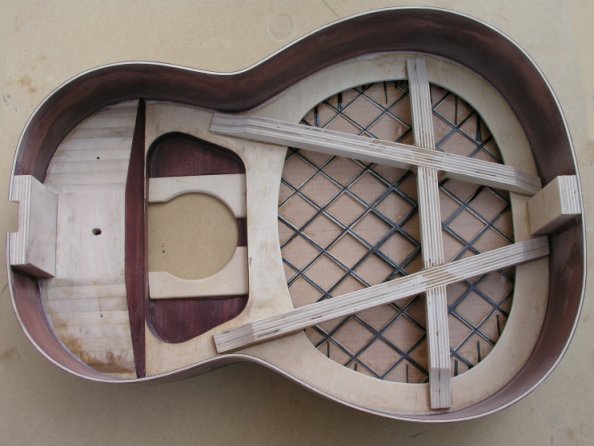[QUOTE=Hesh1956] This picture was posted prior and facinated me to no end...... and it seems appropriate now to show it again.
I don't recall what the thread was about or if this is even one of Ervin's guitars - Brock do you recall when this was posted and what the story is/was?
 [/QUOTE]
[/QUOTE]
Yeah, this is one of Ervin's guitars. IIRC Dave Bland posted this from his course, but I have a bunch just like it.
 That is a good example of where the box is in construction when he braces it.
That is a good example of where the box is in construction when he braces it.
Also... notice how all of the braces are coupled (or nearly coupled) to the bridge plate.
I don't know if Ervin would agree with this thinking or not, but one of the things I came away from the class thinking was that braces are more like "irrigation ditches" that channel the energy through the top vs. structural supports that keep the guitar from imploding.
I realize they do both, but shifting my thinking to PRIMARILY the ditches model has made a significant difference in my post class guitars.


 .. hope to meet you in person someday !!
.. hope to meet you in person someday !!